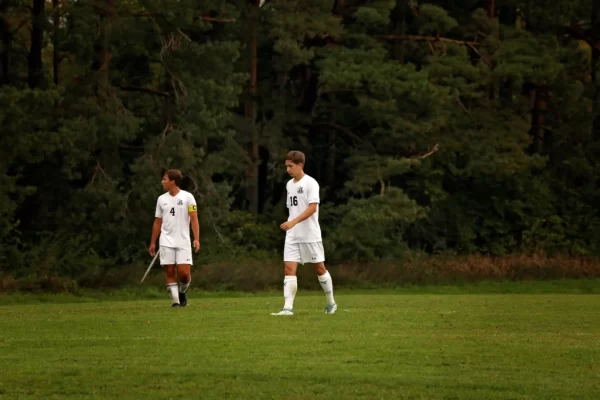Baseball no longer “America’s Pastime”
December 3, 2018
(Editor’s Note: This article was originally published on July 19th of this year, during my two-week summer journalism camp at Boston University. This article does not include end-of-season viewership stats, nor any pennant bragging from me. Go Sox!)
The Boston Red Sox have the second highest average single ticket price in Major League Baseball (MLB) at $56.97.
They also “boast” the highest average parking cost of any MLB team at $35, one of the pricier concession stands (a classic “Fenway Frank” will set you back $5.25) and the overall most expensive day at the ballpark, according to a GOBankingRates study.
However, the Red Sox aren’t alone. Professional baseball games across the country are getting more expensive. The average general admission ticket price during the 2018 season is $32.44, compared to the $31 average set last year and the $23 average set in 2006.
That $23 that would’ve gotten you a seat in the average MLB ballpark won’t even get you a spot in their parking lot anymore.
“I cannot afford to pay for a Major League Baseball game any longer,” said Melissa Ludtke, a longtime sports journalist and a named plaintiff against the MLB. “They’ve outpriced me. I just can’t afford to go to a game.”
This is one of the many reasons why baseball is experiencing a dip in popularity in America. In addition to high prices, low TV ratings, a slower game and little youth interest have haunted the MLB over the past couple of years.
MLB TV ratings have been steadily dropping for years now. According to Nielsen ratings, 17 out of the 29 U.S. MLB teams experienced ratings drops in household viewership during the 2017 season. This number is up from the 13 teams that saw ratings drops during the 2016 season.
Although TV ratings as a whole have been down, one potential reason for the drop could be new game-streaming services, such as MLB.tv.
“While old-style cable viewing is down just a bit, nobody is tracking the increase in baseball viewing via streaming,” said Rodney Fort, professor of sports management at the University of Michigan. “I’m sure MLB is doing the best it can.”
Fort is also the author of many baseball books, including “Hard Ball: The Abuse of Power in Pro Team Sports.”
Some baseball streaming services may not have accessible viewership numbers, but Facebook does. According to its records, Facebook’s exclusive MLB broadcasts have averaged 65,000-85,000 viewers per game, a low number compared to both TV ratings and other streaming services, such as NFL Network.
One of the most frequent complaints of casual baseball fans is that the game is too long, and therefore gets boring.
National Public Radio (NPR)’s Doreen McCallister reported that the average MLB game in 2017 lasted over three hours, compared to the two and a half hours in 2005. A half hour difference may not seem like a long time, but with more people than ever leaving baseball games early, it’s become obvious that some people notice the extra time.
“There are very short attention spans in this generation,” said Ludtke, “so you’ve got the question of whether people have the ability to watch a game that many other people consider slow.”
Many proposals have been made to speed up baseball games, thus reducing the “boring” downtime.
One suggestion, proposed in 2016, was to incorporate an MLB “pitch clock” limiting the amount of time the pitcher has in between pitches. Minor League Baseball currently has a pitch clock, but bringing the idea to the majors was shot down by the MLB Players Association.
Other ideas include limiting the amount of times a batter can step out of the box (which also creates more time in between pitches), creating a foul ball limit and allowing umpires to use instant replay on all calls instead of deliberating. None of these, however, have been implemented.
Perhaps the greatest issue facing baseball today, however, is the lack of youth interest in the sport.
Nielsen ratings show that the average age of an MLB viewer is 53, the highest among America’s “Big 4” (football, basketball, baseball and hockey).
The problem runs deeper than just viewing, though, as fewer kids are playing baseball. Little League studies have shown that the number of 7- to 17-year olds playing baseball in the United States has decreased by almost four million between 2002 and 2013. There has also been a 20 percent drop in Little League players specifically since the 1990s.
“They’re [the MLB] making a lot of effort to get young people re-engaged in playing the game,” said Ludtke.
Efforts such as the Baseball Tomorrow Fund have been launched by the MLB to promote youth involvement in baseball, but recently, it just doesn’t seem like enough.
The future doesn’t look too bleak, however, as the key to baseball’s resurgence may just be the downfall of other youth sports.
“As parents move their kids away from contact sports to sports like baseball, the base will grow,” said Fort. “So the MLB version will be increasingly popular over time.”
Other (more high-impact) youth sports, such as Pop Warner football and U.S. youth soccer, are also experiencing declines in youth involvement. This very well could leave the door open for Little League numbers to spike back up.




